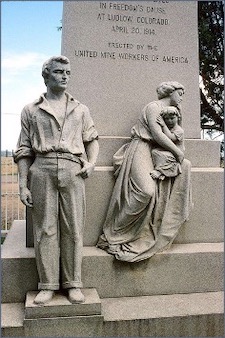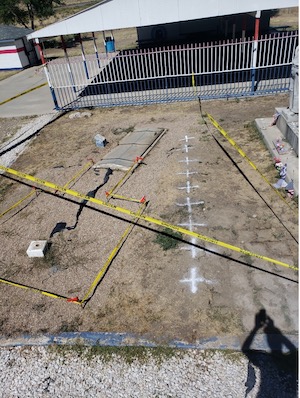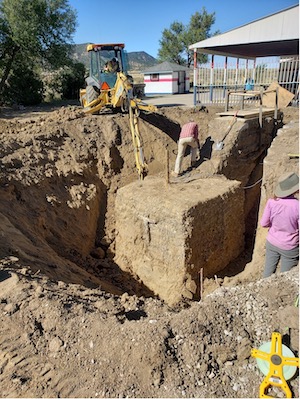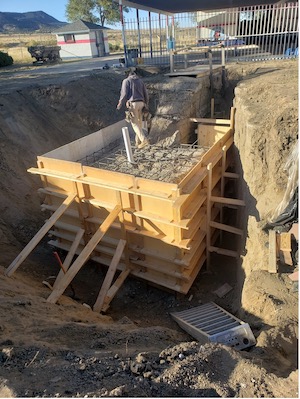Progress to Restore Concrete Cellar at Ludlow Tent Colony Massacre Site
April 20, 1914, Colorado National Guard shot striking coal miners with machine guns and burned their tent camp at Ludlow (Tent Colony – 1,200 population) to the ground. The violent day left 21 dead. It was the height of Colorado Coalfield Wars – strikes led by United Mine Workers of America (UMWA) against Colorado Fuel & Iron (CF&I) – which began in 1913 at a narrow canyon opening leading to the mines in the low hills of the Sangre de Cristo Mountains near Ludlow. Following the turn of the 20th century, strife between mine workers and CF&I began to escalate as coal miners (many new immigrants) suffered horrible working conditions, gas explosions, low and decreasing wages, and a lack of unions. Many of the workers and their families lived in company “towns” or tent colonies like Ludlow.


Ludlow has since been dubbed the “deadliest strike in the history of the United States.” The Ludlow Massacre was a pivotal event in U.S. mining history that resulted from workers’ efforts to improve conditions and the broader struggle between labor and control over workplace management.
In 1918, a granite monument was erected by UMWA at the site. Later that year, the “death pit” was encased in concrete to memorialize the victims.
Located just off I-25 north of Trinidad, the Ludlow Tent Colony Site is a National Historic Landmark, nationally recognized as a place of memory, and is one of few sites of violence and tragedy immediately commemorated by a union with a substantial memorial. Now more than 100 years old, water infiltration in the cellar has caused concrete instability, spalling, cracking, and failing structural steel components rendering it unsafe for public access.
Starting in 2019, following two grants from Colorado’s State Historical Fund (SHF), Colorado Preservation, Inc. began working to restore the concrete cellar at Ludlow with the following project team: UMWA and Las Animas County provided physical labor, excavation equipment, and materials; the National Park Service’s National Historic Landmark Program provided in-kind archeological expertise and support; Scheuber+Darden Architects provided architectural/engineering services. A&M Renovations is the general contractor. In partnership with UMWA, Colorado Preservation, Inc. helped secure funds in 2020 from National Trust for Historic Preservation and is administering it and the SHF grant. This structurally sensitive restoration project is finally underway. With this dedicated team and hopes of good weather, the cellar will be stabilized, and be once again safe for the public by the end of 2021.

Courtesy of Scheuber+Darden Architects

Courtesy of Scheuber+Darden Architects

Courtesy of Scheuber+Darden Architects

Courtesy of Scheuber+Darden Architects
For more information on this project and others that are possible with the help of Colorado Preservation, Inc., get in touch with Jane Daniels, director of preservation services, at [email protected], or 303-893-4260, ext. 236.
For more, check out History Colorado:
Ludlow Tent Colony Site – Ludlow Monument – Ludlow Massacre Memorial – Ludlow Massacre Site (Cellar)



